Laterites
Type of resources
Topics
Keywords
Contact for the resource
Provided by
Years
Formats
Update frequencies
-
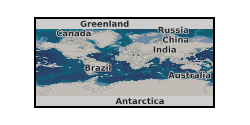
Thermogravimetric Analysis profiles as xy datasets of limonites from Acoje (Philippines), Caldag (Turkey), Piaui (Brazil) and Shevchenko (Kazakhstan) laterite deposits. The data were acquired during the NERC SoS Minerals CoG3 project between 2015 and 2018 using a TA Instruments Thermogravimetric Analyzer (TGA) instrument at the Natural History Museum, London, UK. Powdered samples were loaded into the TGA and heated at 10 degrees C per minute up to 800 degrees C under a flowing N2 atmosphere. Information regarding the type and proportion of hydrous or volatile rich mineral phases can be obtained from the decomposition profile. This may be useful within the mining sector, resource assessment, processing or prospecting, geo- or material scientists and processing engineers / metallurgists. The data were acquired in the Earth Sciences Department, Natural History Museum by the NHM CoG3 team. NERC grant: CoG3: The geology, geometallurgy and geomicrobiology of cobalt resources leading to new product streams
-
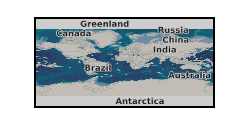
Data from experiments on rare earth element leaching from ion adsorption deposits. Columns experiments of leaching from a Madagascar ion-adsorption soil. Six soil columns for two deposit types with different starting/operational conditions. Data reported are the volume, pH and conductivity, and the molar concentrations of each eluate fraction for the metals, ammonia and Cl. SOS - NERC Security of Supply of Mineral (SoS) Resources programme
-
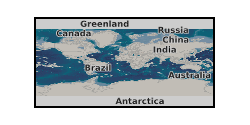
Chemical composition of 18 ion adsorption deposits (lateritic soils) from Ambohimirahavavy alkaline province, North West Madagascar as part of NERC funded SoS RARE in 2016. Samples collected from pits at depths down to 6.5m below surface. Details of samples in dataset “Sample list for the SoS RARE project” (https://webapps.bgs.ac.uk/services/ngdc/accessions/index.html#item165705 ). Chemical composition of biological and chemical leachates from one Madagascan sample. Time series covers 60 days leaching during 2016 and results are in mg/kg of original material. Biological leaching agents: Aspergillus sp. And Bacillus sp. Inoculum and natural community and chemical leaching agent: ammonium sulphate. Details of experimental procedure in https://doi.org/10.3390/min8060236. Experiments conducted at the British Geological Survey to assess suitability of bioleaching as a more sustainable alternative to chemical leaching of rare earth elements from ion adsorption deposits.
-
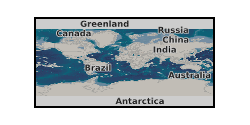
Analyses of archive rock and soil samples from the Mushgai Khudug (Mongolia), Dalucao, Miaoya and Lizhuang (China) rare earth element deposits. Data characterise mineralogy, bulk rock geochemistry and sequential leaching experiments on laterite, weathered rock and soil overlying carbonatite related REE deposits. The data was collected to determine enrichment and depletion of the REE relative to bedrock, the mineral host of REE and the ease of extraction.
-
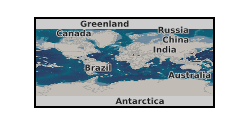
NERC Grant NE/M011488/1 X-ray powder diffraction patterns as xy datasets of limonites from Acoje (Philippines), Caldag (Turkey), Nkamouna (Cameroon), Piaui (Brazil) and Shevchenko (Kazakhstan) laterite deposits; reduced sulphide ore from Thakaringa Mine (Australia) and Captain deposit (Canada); processing residues from the Kevitsa Mine (Finland). The data were acquired during the NERC SoS Minerals CoG3 project between 2015 and 2018 using a PANAlytical X’Pert Pro diffractometer at the Natural History Museum, London, UK. Powdered samples were back loaded into a deep well holder, loaded into the instrument in reflection geometry and data collected using Co Kalpha radiation between 3 and 70 degrees 2Theta. These data were used primarily for phase identification. This may be useful within the mining sector, resource assessment, processing or prospecting, geo- or material scientists and processing engineers / metallurgists. The data were acquired in the Core Research Laboratories, Natural History Museum by the NHM CoG3 team. NERC grant: CoG3: The geology, geometallurgy and geomicrobiology of cobalt resources leading to new product streams
-
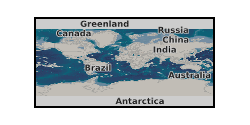
NERC Grant NE/M011488/1 Electron microprobe analyses of Mn-oxyhydroxide phases as elemental percentages per point analysis. Mn-oxyhydroxide phases were within limonites from Acoje (Philippines), Caldag (Turkey), Nkamouna (Cameroon), Piaui (Brazil) and Shevchenko (Kazakhstan) laterite deposits. The data were acquired during the NERC SoS Minerals CoG3 project between 2015 and 2018 using a Cameca SX100 electron microprobe at the Natural History Museum, London, UK. Point analyses were performed on samples set within epoxy resin blocks, polished and coated with carbon. All elements were analysed using wavelength dispersive X-ray spectrometers. These data were used to identify the Co and Ni bearing host minerals within each natural resource and to assess the amount and variability of these elements within specific Mn-oxyhydroxide phases. This may be useful within the mining sector, resource assessment, processing or prospecting, geo- or material scientists and processing engineers / metallurgists. The data were acquired in the Core Research Laboratories, Natural History Museum by the NHM CoG3 team. NERC grant: CoG3: The geology, geometallurgy and geomicrobiology of cobalt resources leading to new product streams
-
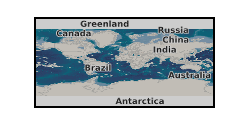
Sample list and experimental conditions. Ilumina Mi Sequencing OTU results for samples from Acoje Nickel Laterite, Philippines and Shevchenko, Ukraine. Illumina Mi Sequencing Results from Acoje, Philippines and Shevchenko Ukraine. These data are from a proof of concept study examining the bioextraction of cobalt and nickel from laterites stored at the Natural history Museum. The data here represent the sequencing of the microbial populations in the laterite samples from Acoje, Philippines, and Shevchenko, Ukraine.
-
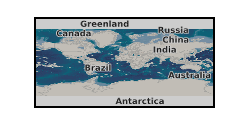
NERC Grant NE/M011488/1 Electron microprobe analyses of Fe-oxide and Fe-oxyhydroxide phases as elemental percentages per point analysis. The phases were within limonites from Acoje (Philippines), Caldag (Turkey), Nkamouna (Cameroon), Piaui (Brazil) and Shevchenko (Kazakhstan) laterite deposits. The data were acquired during the NERC SoS Minerals CoG3 project between 2015 and 2018 using a Cameca SX100 electron microprobe at the Natural History Museum, London, UK. Point analyses were performed on samples set within epoxy resin blocks, polished and coated with carbon. All elements were analysed using wavelength dispersive X-ray spectrometers. These data were used to identify the Co and Ni bearing host minerals within each natural resource and to assess the amount and variability of these elements within specific Fe-oxide or Fe-oxyhydroxide phases. This may be useful within the mining sector, resource assessment, processing or prospecting, geo- or material scientists and processing engineers / metallurgists. The data were acquired in the Core Research Laboratories, Natural History Museum by the NHM CoG3 team. NERC grant: CoG3: The geology, geometallurgy and geomicrobiology of cobalt resources leading to new product streams
 BGS Data Catalogue
BGS Data Catalogue